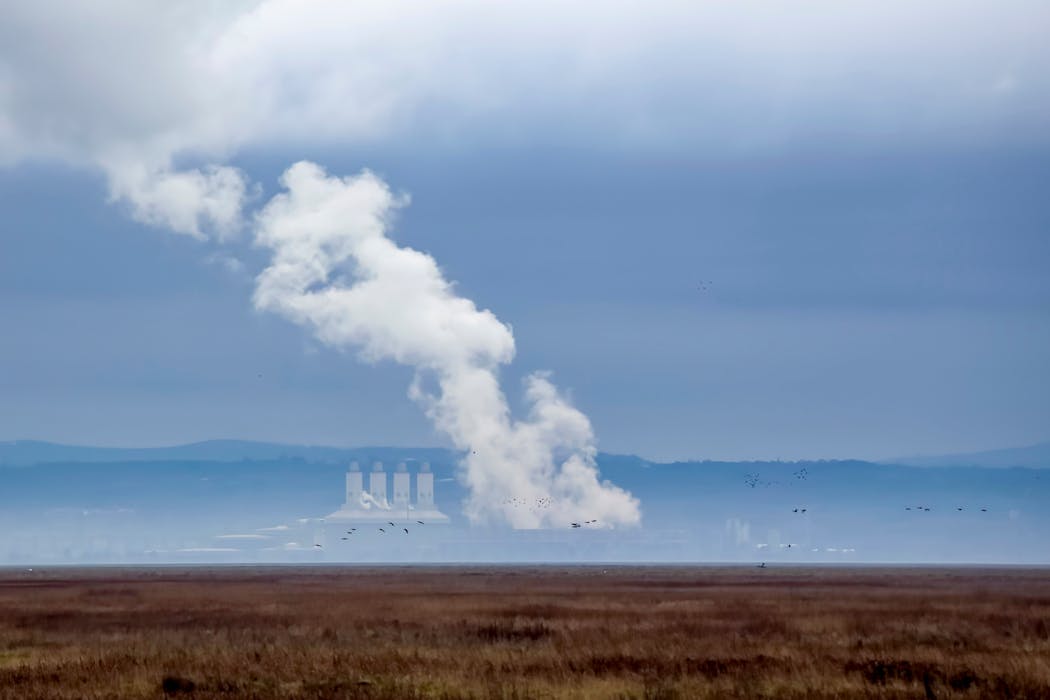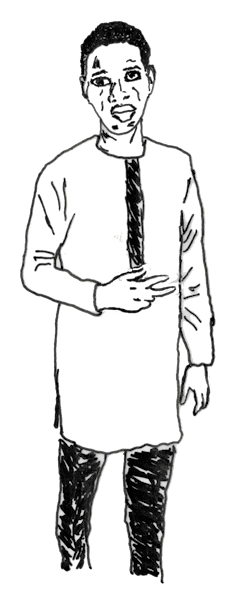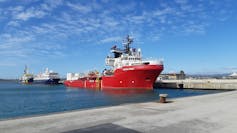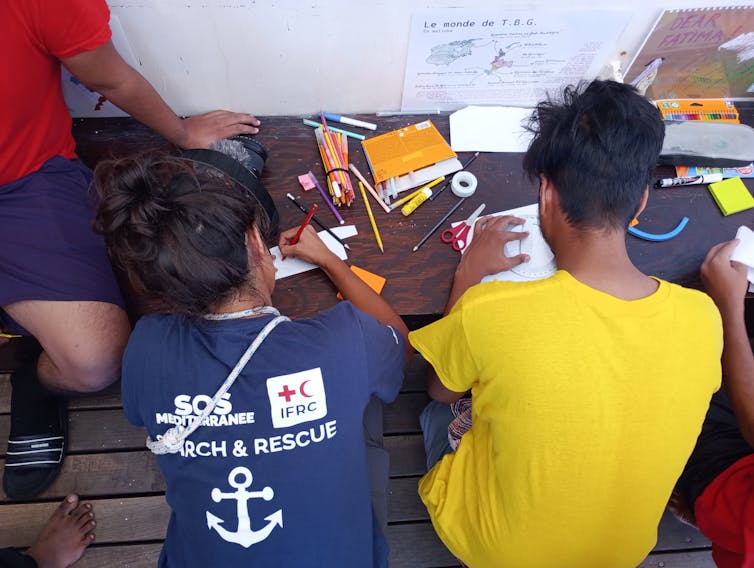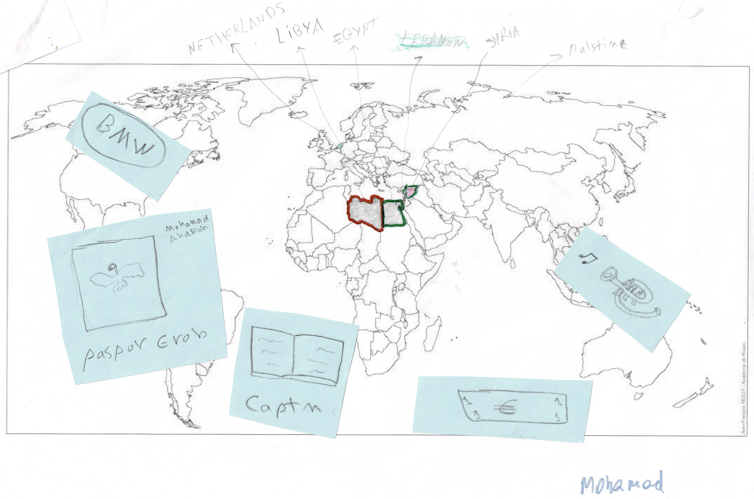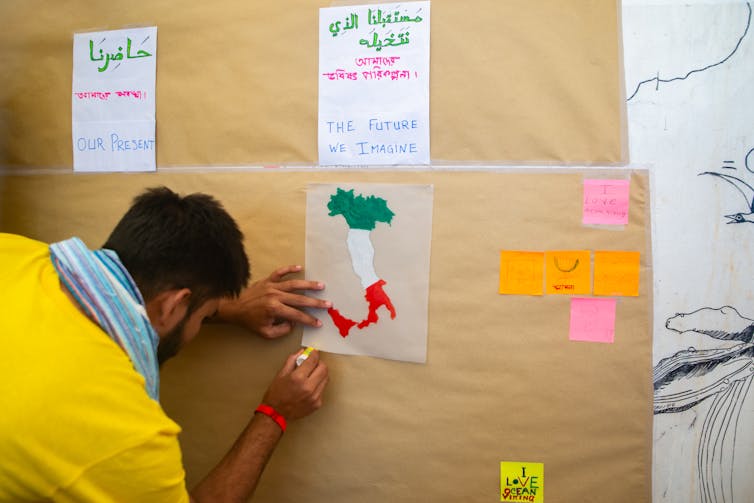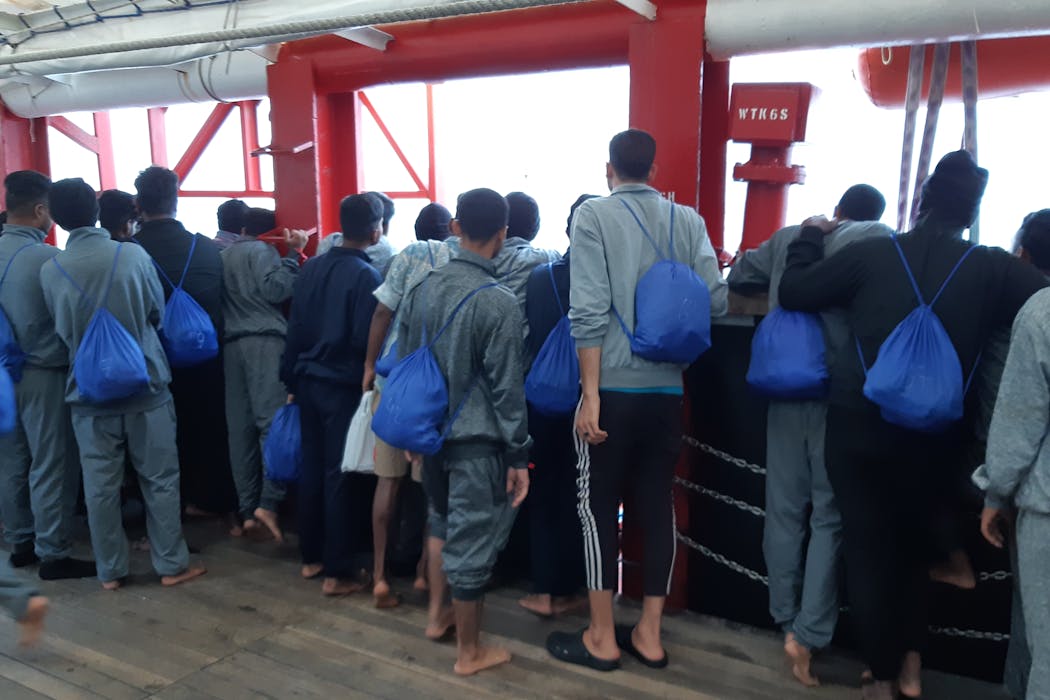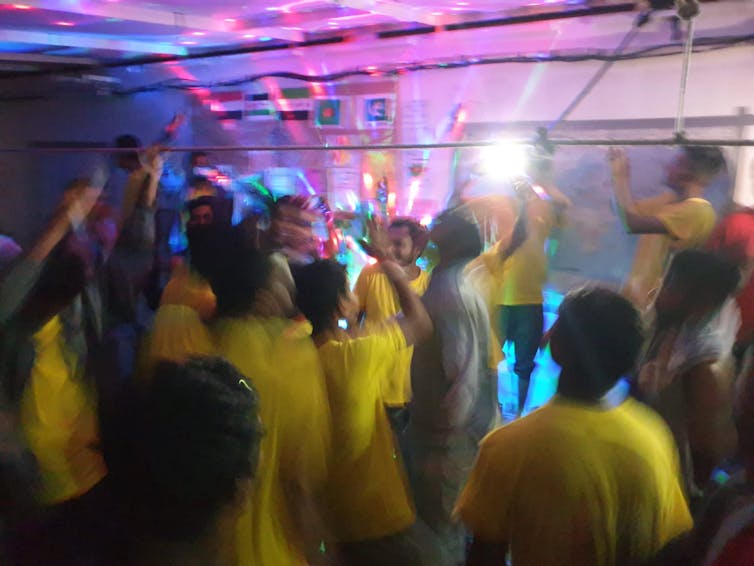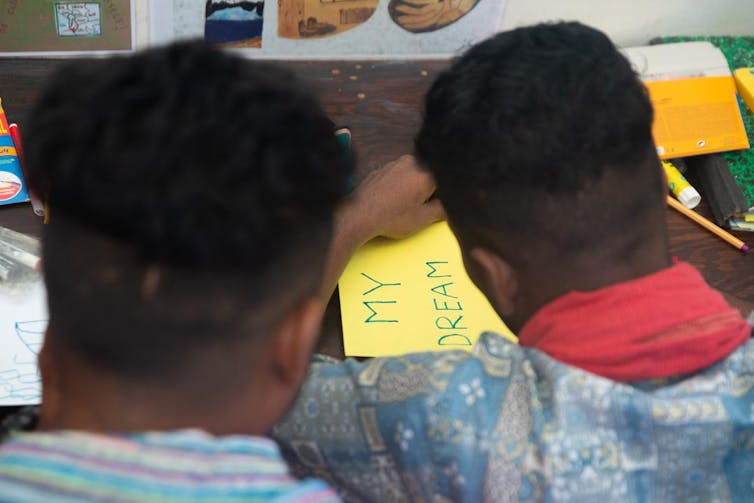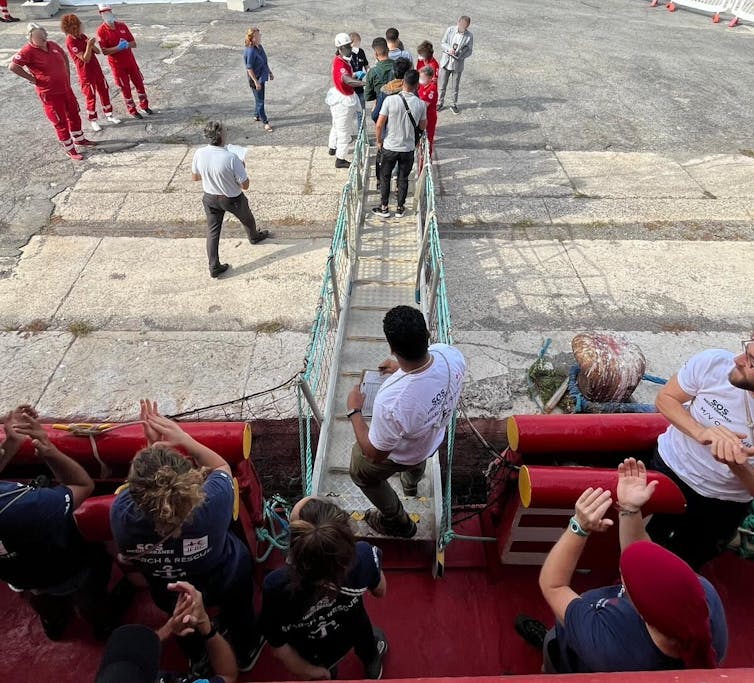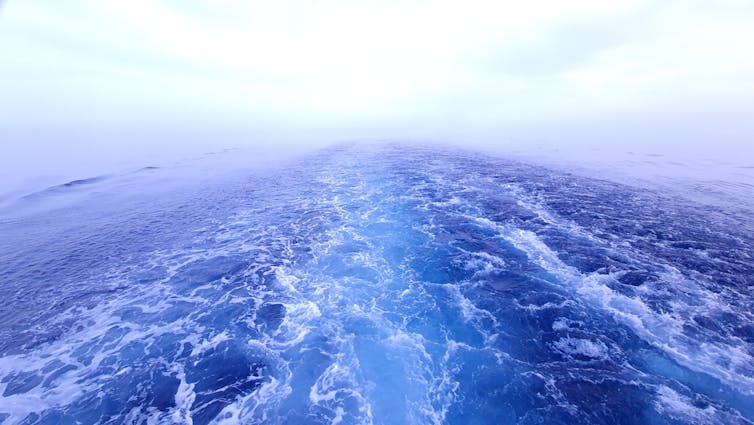Source: The Conversation – UK – By Jonathan Este, Senior International Affairs Editor, Associate Editor, The Conversation
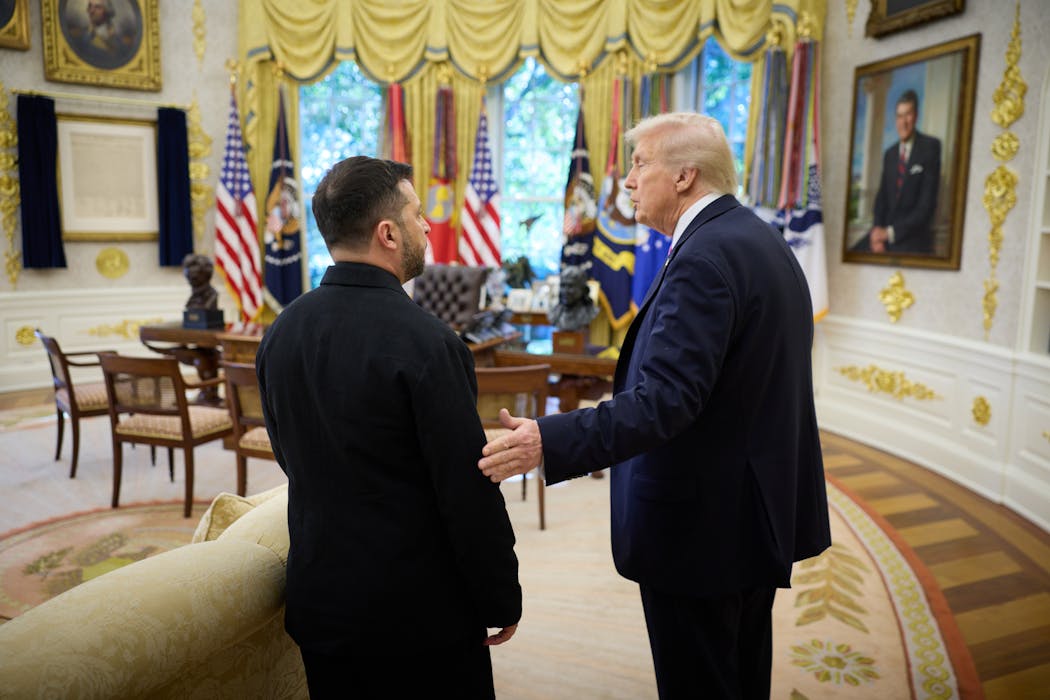
This newsletter was first published in The Conversation UK’s World Affairs Briefing email. Sign up to receive weekly analysis of the latest developments in international relations, direct to your inbox.
It appears that Volodymyr Zelensky is fast catching on to the best way to curry favour with Donald Trump. The Ukrainian president has this week backed the US president’s call for a freezing of the conflict in Ukraine along its current frontlines so that negotiations proper can get underway.
“[Trump] proposed ‘Stay where we stay and begin conversation’,” Zelensky told reporters on October 22. “I think that was a good compromise, but I’m not sure that Putin will support it, and I said it to the president.”
And that’s the key. The Ukrainian president knows that Vladimir Putin won’t support Trump’s latest plan. Putin has said as much. So Zelensky gets to pal up with the US president while reminding him who is to blame. It’s statecraft worthy of Putin, the master manipulator, himself.
At the beginning of the week it appeared that it was Putin that had once again played the US president, phoning Trump to persuade him to ditch his idea of supplying Ukraine with the powerful Tomahawk missiles he’d been promising and instead schedule a get together in Budapest sometime in early November.
Reports from the White House were that Trump and Zelensky subsequently had a stormy meeting, during which the US president is said to have thrown maps of Ukraine around the room and ordered the Ukrainian president to surrender the key Donbas region or be “destroyed” by Russia.
Stefan Wolff, professor of international security at the University of Birmingham has discerned something of a pattern to Trump’s relationship with Putin.
“First he expresses anger and frustration with his Russian counterpart, Vladimir Putin,” Wolff observes. “Then he threatens severe consequences. And finally – usually after some contact with the Russian president – he finds some imaginary silver lining that, in his considered view alone, justifies backing down and essentially dancing to the Russian dictator’s tune again.”
Read more:
Trump’s heated White House meeting with Zelensky shows how well Putin is playing the US president
Zelensky has clearly caught onto this, but if anything his technique is more Machiavellian – encouraging Trump in a venture he knows that the Russian president will reject and as a result gaining traction from the occupant of the Oval Office.
It’s already bearing fruit. Just one day after the plan for a Trump-Putin summit in Budapest fell through, the US announced it will impose sanctions on Russia’s biggest oil exporters, Rosneft and Lukoil. It is the first sanctions package imposed by the US since Trump returned to the White House in January.
It’s all very well, writes economist Sergey Popov, of Cardiff University. But will the sanctions really have much effect on Russia’s ability to continue fighting? The country’s economy is now fully geared up for war and Putin seems to be able to replenish the admittedly severe casualties his army is taking in Ukraine.
Russia has also proved itself adept at evading sanctions in the past. Popov believes that the west should have hit Russia with severe sanctions years ago – as early as 2008 when Putin sent his troops into Georgia. Everything since has been too little and too late, primarily coming from the EU and UK. And in fact, European countries still buy a great deal of oil from Russia.
But the US has joined the party. There’s hope, Popov concludes.
The cancellation of the Budapest summit, meanwhile, has at least avoided the awkward diplomatic prospect of the Russian leader, the subject of an arrest warrant from the International Criminal Court (ICC), having to fly through EU airspace in order to get there.
Not only that, but Hungary – despite having announced its intention to withdraw from the ICC, has not yet completed the process, so would be formally obliged to detain Putin. The chances of that happening were always going to be remote in the extreme, but it raised an awkward situation when it comes to the delicacy of the country’s relationship with its EU partners.
As Marc Roscoe Loustau notes, Hungary’s prime minister, Victor Orbán, is known to be an admirer of Putin and has often played a role in blocking or delaying the EU’s efforts to help Ukraine. But the Trump-Putin meet-up might have damaged the relationship beyond repair.
Meanwhile, Russia continues to make small but incremental gains on the battlefield. Some bad weather in Ukraine has played to Russia’s advantage, hampering Kyiv’s ability to exploit its much-vaunted expertise in drone warfare.

Institute for the Study of War
Russia has been taking advantage of this to push ahead on the ground, confident that the Ukrainian military’s ability to knock out its heavy armour with swarms of drones is weakened by conditions. As Peter Lee says, once again Russia is using its old ally, winter weather, to steal an advantage in conflict.
Lee, an expert in air power and drone warfare at the University of Portsmouth, explains why drones are so vulnerable to harsh weather conditions.
Read more:
Russia turns to an old ally in its war against Ukrainian drones: the weather
An ‘American king’ in Washington
Last weekend an estimated 7 million people took to the streets of US cities to protest Trump’s increasingly autocratic style of government. The “No Kings” marches were, by all accounts, overwhelmingly peaceful and aimed to ram home a point which is sure to resonate with the majority of people, given recent polling that found 85% of Americans reject the idea of being subjects in a monarchy.
Tom Wright of the University of Sussex, who specialises in political rhetoric, says that America was “built on a rejection – the rejection of being ruled by a monarch”. The charge of wanting to set up as a royal ruler has been levelled against various US presidents over 250 years, he says. This includes – remarkably – Abraham Lincoln, whose sweeping powers during the civil war gave rise to concerns he had become too powerful.
Going back further, the very suggestion by Thomas Jefferson, one of the founding fathers, that the correct styling for a US president should be “His Highness”, resulted in widespread derision. (Incidentally, he was also given the nickname “His Rotundity”, which was dreadfully unfair given that he was reportedly 6’2″ and weighed just 82 kilos.)

American Spectator
But down the ages, when anyone wants to mock a president they portray them as wearing a crown. It was even done to Barack Obama in 2014 by the American Spectator magazine.
Wright argues that the No Kings protest is something that could unite large sections of the fractured US population: “It has the potential to speak to conservatives alarmed by executive overreach, to progressives wary of authoritarian drift, and to independents nostalgic for civic balance.”
Read more:
‘No kings’: America’s oldest political slogan is drawing millions out onto the streets
Sign up to receive our weekly World Affairs Briefing newsletter from The Conversation UK. Every Thursday we’ll bring you expert analysis of the big stories in international relations.
![]()
– ref. Putin, Zelensky and the art of ‘playing’ the US president – https://theconversation.com/putin-zelensky-and-the-art-of-playing-the-us-president-268246

